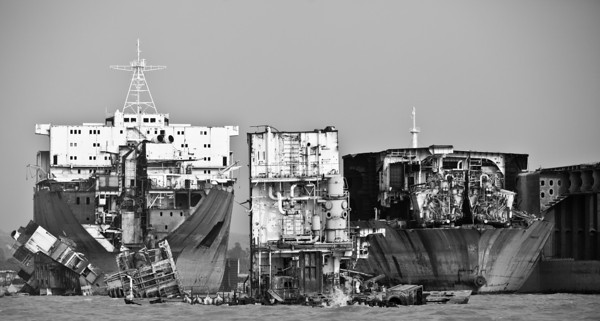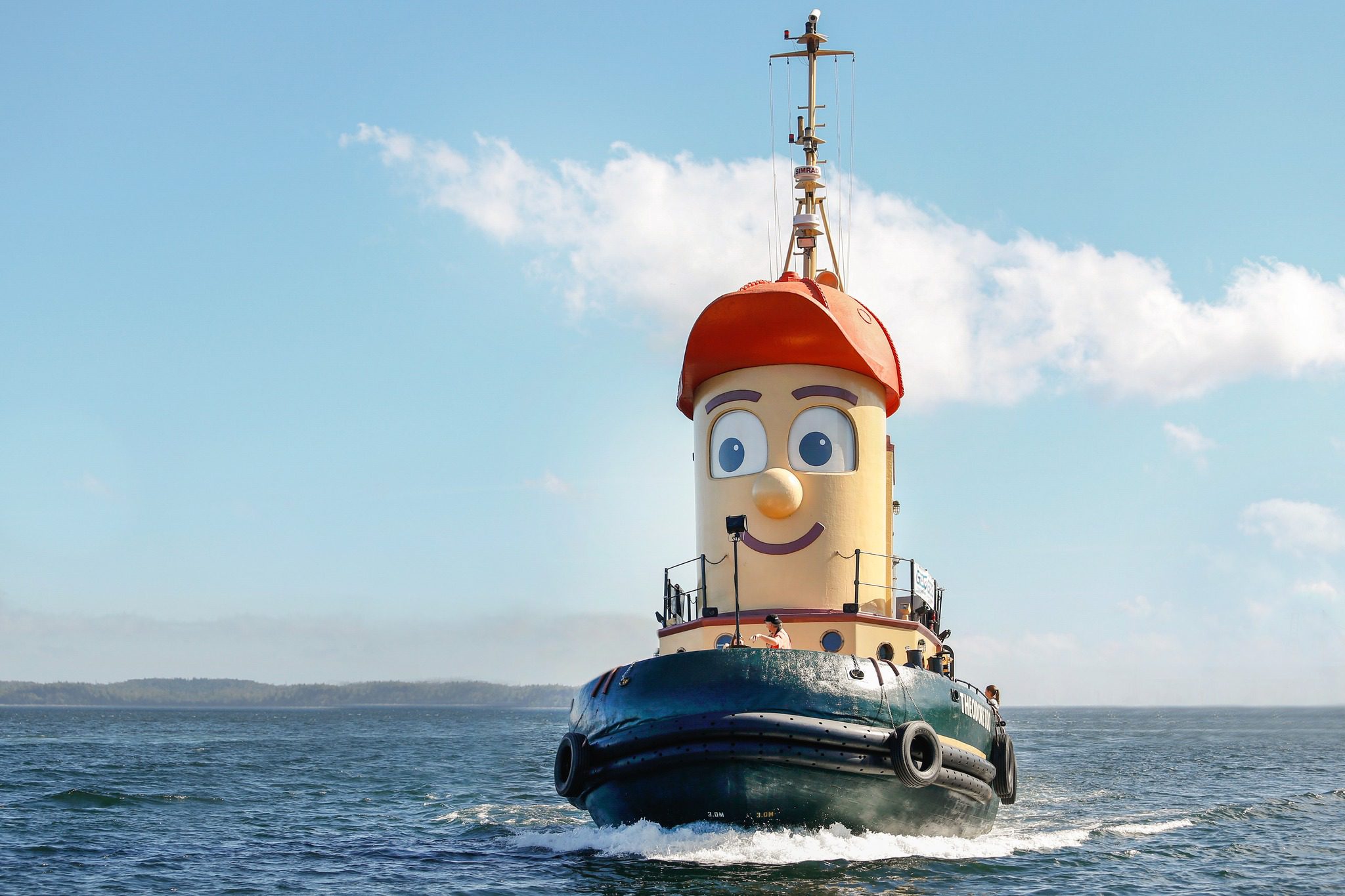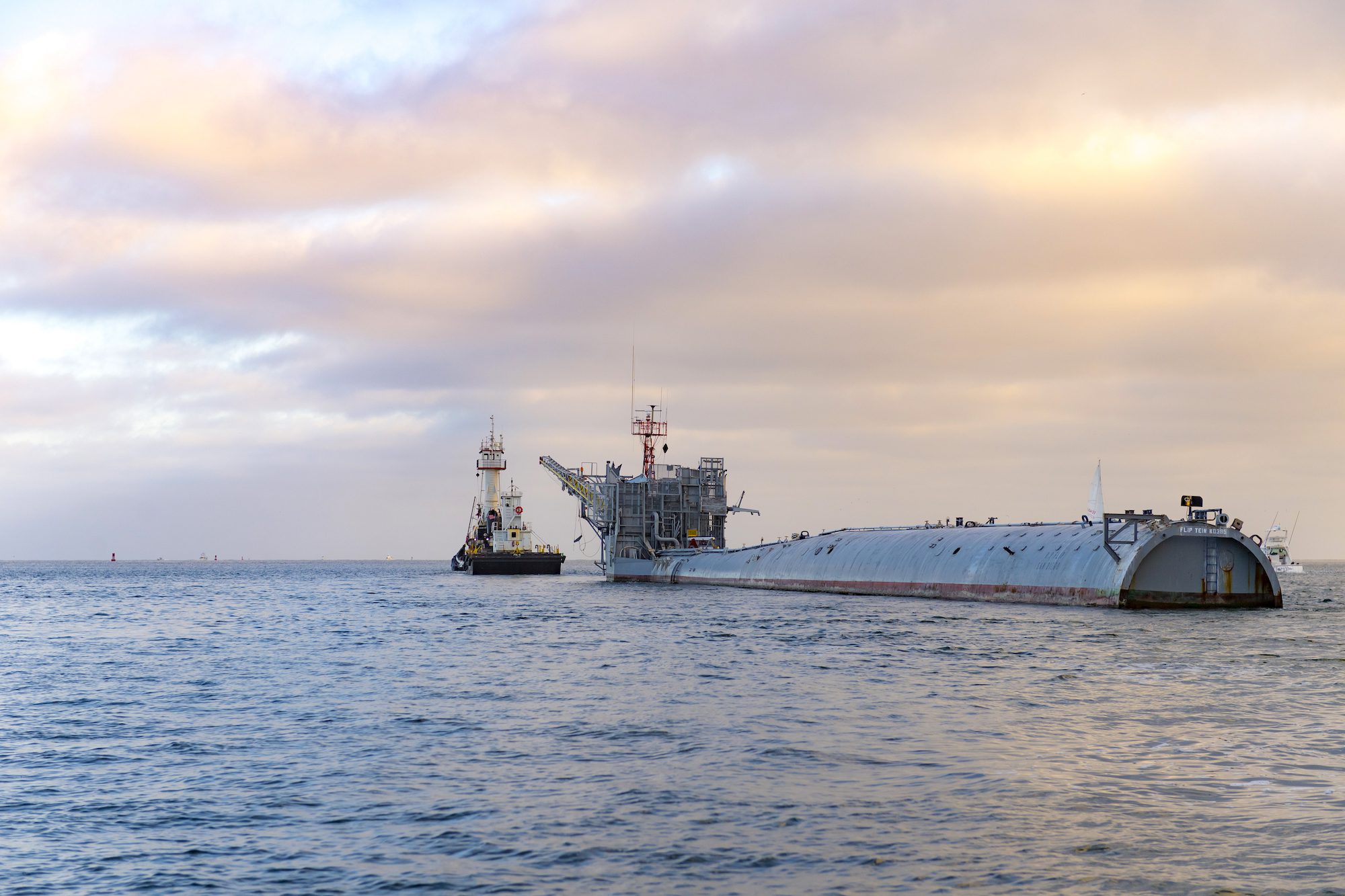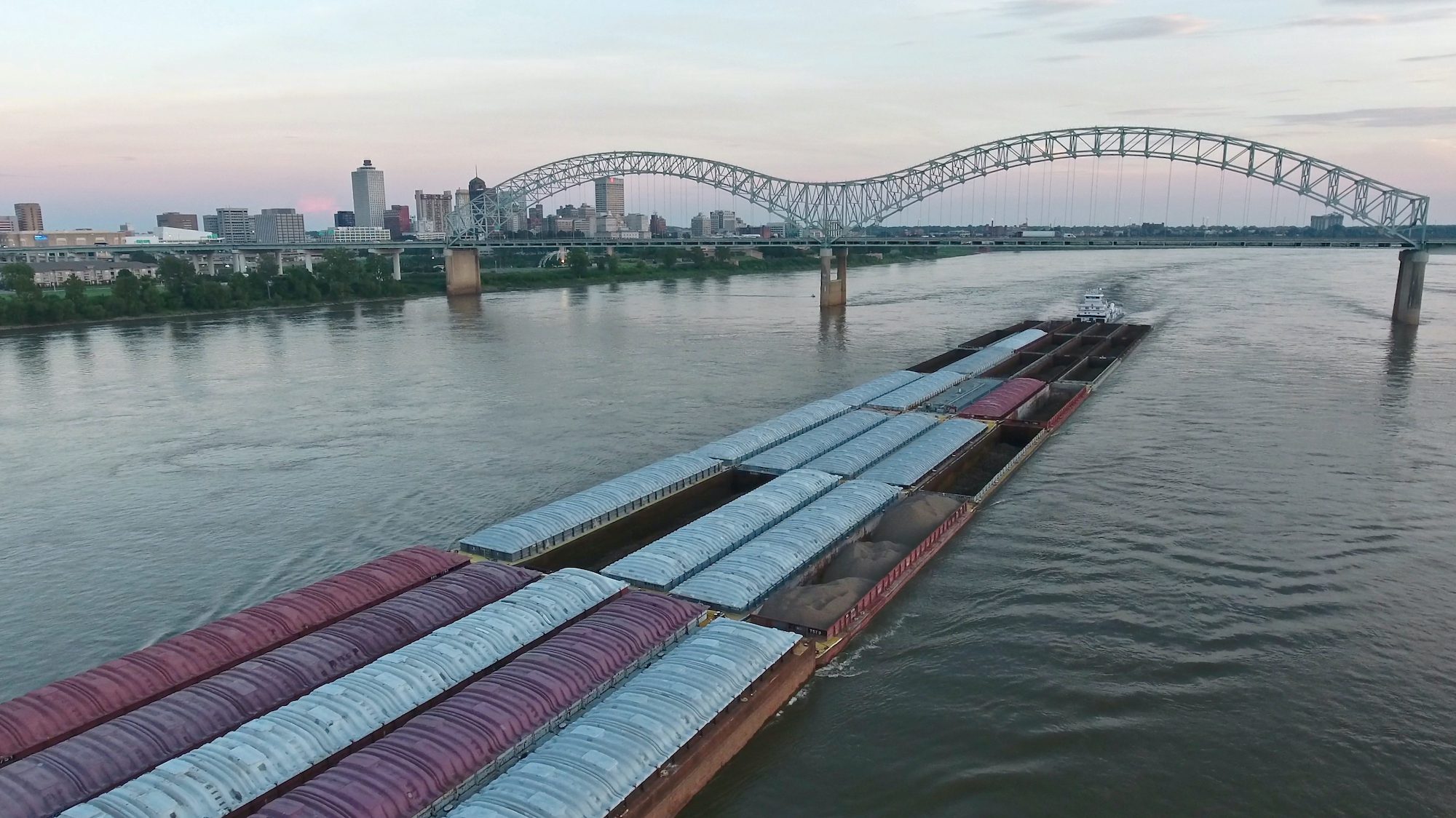By Jan Møller Hansen
Ship breaking in Bangladesh started back in 1960 when the Bay of Bengal was struck by a cyclone, which left a giant cargo ship beached near the sea shore of Fauzdarhat near Chittagong. The ship owners abandoned the wreck, and local metal workers slowly began to scrounge it for scrap metal and material. In 1974, a salvaged Pakistani navy vessel, which was sunk during the Bangladeshi liberation war, was scrapped by Karnafully Metal Works. These two incidences are considered to be the beginning of the ship breaking industry in Bangladesh.
The ship breaking industry gradually grew since then, and by the mid 80s Bangladesh had become one of the major ship breaking nations in the world. Some of the world’s largest decommissioned ships are today scraped at the shores north of Chittagong, which is the second largest city and major sea port in the country. Environmental policies and laws were not enforced, labour salaries were among the lowest in the world and there were no standards for occupational health and labour safety. Obviously there were plenty of opportunities to exploit people and the environment when moving forward with the ship breaking business.
Ship breaking on the beach, which already at that time was prohibited in most countries, could be done in Bangladesh without any concern. Poverty and millions of people without education were looking for livelihood ooportunities. They provided cheap and exploitable human man power needed for the ship breaking industry. No major investments were required for engaging in ship breaking.
Photo Gallery: Ship breaking beach in Chittagong
The present type of ship breaking in Bangladesh just require a large winch, some blowtorches and maybe a bulldozer. Rest of the operation is just raw human man power. Labour is extremely cheap, environmental and labour standards are loosely applied and no pre-cleaning of the ships are required for entering the ship breaking beach in Chittagong. Ship breaking is therefore a lucrative business with few risks for the yard owners, investors and money lenders.
The ship breaking industry in Bangladesh is estimated worth an annual turn over of around 1.5 billion dollars. Globally some 700 ocean-going vessels are scrapped each year, and more than 100 of them are scrapped in Bangladesh. Some of the ships are 350 meter long with a weight up to 10-15.000 tons. It is estimated that app. 30 percent of the world’s Light Displacement Tonnes (LDT) were scrapped in Bangladesh during the period 2000-2010. Since then the business has been slightly declining due to the global recession and more strict enforcement of national laws and regulations. But the business is now picking up again, and the number of ship yards increases year by year.
Ship breaking generates a lot of jobs, and it is estimated that some 30-50.000 people are directly employed in the ship breaking industry in Bangladesh. Additionally, another 100.000 are indirectly involved in the business. Most of the labourers are hired by the ship yards through local contractors on a ship by ship basis. A labourer earns around 1-3 dollars per day depending on the type of work. Some 300-500 people are typically employed on a temporary basis for dismantling a ship, and many more are employed in downstream activities for recycling of all kind of materials from the ships.
Some of the recycled materials are exported, and the rest is sold of and reused in Bangladesh. A lot of the materials are of high value to the local economy. In particular, recycling of steel for producing iron rods for construction, plates for new ships or for many other purposes is a lucrative business. Up to 70-80 percent of the steel used in Bangladesh is believed to originate from the ship breaking yards in Chittagong. One of the most valuable parts of a ship is the propeller, which is often worth 50.000-100.000 dollars. Propellers and other high value items are exported to other countries.
It is estimated that there are around 100 ship breaking yards along the coast north of Chittagong, and every year new yards are being constructed. The ship yards are owned by politicians and business people.
The ship breaking practices applied in Bangladesh are strictly prohibited by most countries in the world due to very dangerous nature of the work and the huge environmental implications. It is the so-called beaching method that is being used in Bangladesh. The ship is sailed with maximum speed during the high tide and will be beached over the flat muddy land where it is completely dismantled by semi- and unskilled labourers during the low tide. Beaching is considered a specialised operation. The captain on board has to calculate the movement of the tides, the swell and the wind by the minute. The closer the ship is beached to the shore, the more profitable it becomes for the ship yard owner. The gigantic ships are ripped apart by blowtorches and large steel parts are taken to shore with use of electric winches. Most work is done by raw human man power.
One might think that a ship to be scrapped has no value and is a liability rather than an asset. But on the contrary, the scrapping business is so lucrative that the ship breakers are paying for receiving the ships to be scrapped. A ship breaker will typically buy a ship to be scrapped for around 4-10 million dollars depending on the size and quality of the ship. The purchase of a ship is often done through a middleman, who links the local buyers with the international sellers. The ship breaker takes a loan in a local bank often with a high interest rate, and the full loan is repaid in six months time when the ship is completely ripped apart and all the scrap is sold to international and national buyers. Outdated and scrapped ships, which previously where a liability, is now a great asset.
Working in the ship breaking yards is a very dangerous job, which involves many human health risks. Workers are often exposed to asbestos used for insulation in older ships and from paint containing lead, cadmium and arsenic. It is not seldom that workers die caused by gas poisoning or explosions and fires. Old ships are imported without pre-cleaning or removal of toxic gases and dangerous materials. Each ship contains an average of 7000 – 8000 kilo of asbestos and 10 – 100 tons of lead paint.
Sometimes gases explode killing workers. It also happens that workers are crushed by tumbling or falling steel parts. Sometimes workers fall from the high sides of ships on which they are working without safety harnesses. Many of the oxyacetylene cutters work without goggles. Few wear shoes, let alone protective clothing. Local organisations in Bangladesh estimate that some 1000-2000 workers have died in the last 30 years, and many more have suffered serious injuries. General health statistics show that the percentage of people with disabilities in the Chittagong area is above average for the country as a whole, because many workers have lost limbs or got other disabilities from working in the ship breaking yards.
The labourers lack basic equipment. When a new ship arrives, there are containers, chambers and tanks, which contain oil, petroleum and poisonous gases. One method used for checking the level of danger in these parts of the ship is to lower down chickens in a string to check whether there are dangerous gases. If the chickens survive, the first workers will enter to clean for oil, petroleum and other flammable substances. The flammable substances are often burned off before the cutters enter to rip the ship apart. Gas explosions is a common phenomenon.
It is estimated that half of the workers are under 22 years and nearly half of them are illiterate. Some believe that up to around 20 percent of the total work force consist of children. The workers are poor and they have no other alternatives for supporting themselves and their families than to work in the ship breaking yards. There are often no other job alternatives for them. The workers do not know much about rules and regulations on basic occupational health standards and safety. The labourers or their families are poorly compensated when injured or killed.
The Government of Bangladesh has recently introduced new national policies and legislation to improve the environmental and occupational health and safety standards in the ship breaking yards. But there is a long way to go. Governance is poor, and enforcement of policies and laws is often non-existent. Politicians and decision makers have vested interests in the industry, and corruption is wide spread making it difficult to enforce rules and regulations.
In recent years, the ship breaking industry in Bangladesh has been declining due to the global recession and the introduction of new tougher national policies and regulation. But the industry scents morning air. Critics claim that an international convention on ship recycling adopted by the International Maritime Organisation (IMO) in January 2010 perpetuates hazardous and polluting ship breaking on the beaches of the world’s poorest countries, while obstructing transitions to safer and greener forms of ship recycling. An EU ban on single-hull tankers and phase-out regulations and an accelerated phasing-in of double-hulled oil tankers have also meant new business opportunities for the ship breaking industry in Bangladesh.
A number of new ship breaking yards are under construction on the beach north of Chittagong. One of the world’s largest middle men in the global ship breaking business, the owner of Global Marketing Systems, estimates that one third of the world’s ships need to be scrapped in the coming years. No doubt that the industry is gearing up for new business opportunities.
The workers in the ship breaking yards are clear on two things: that they will die early and that there have been no improvements over the last thirty years in terms of worker rights, health and safety.
Jan Møller Hansen is a self-taught and passionate photographer with a main interest in people and their lives. He takes pride in not having attended any formal education or training in photography. The photos in this gallery are from Chittagong, February 2012

 Join The Club
Join The Club











